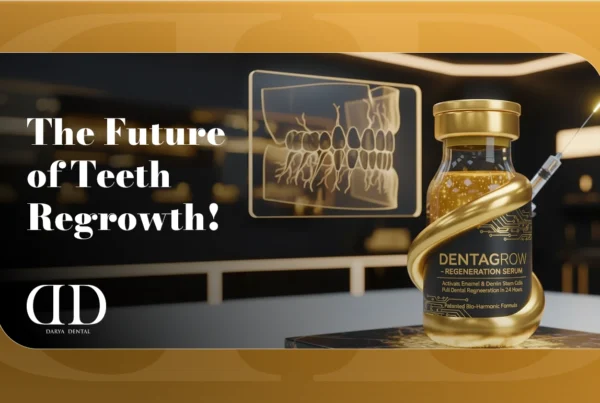
As a practicing dentist with over two decades of experience, I’ve seen countless patients walk through my clinic doors unaware of the silent threat eroding their smiles: acid erosion. Unlike cavities caused by bacteria, acid erosion is a chemical assault on your teeth’s protective enamel, quietly stripping away this irreplaceable shield. Left unchecked, it can lead to sensitivity, discoloration, and even structural damage that affects both function and confidence. But the good news is that with the right knowledge and habits, you can safeguard your teeth for a lifetime. In this comprehensive guide, I’ll share everything you need to know about acid erosion—what it is, what causes it, how to spot it, and, most importantly, how to prevent it.
What Is Acid Erosion?
Acid erosion, also called dental erosion, is the irreversible loss of tooth enamel due to exposure to acids. Enamel is the hardest substance in the human body, a glossy, mineral-rich layer that protects the softer dentin and pulp beneath. When acids from food, drinks, or even your own body come into contact with enamel, they dissolve its calcium and phosphate minerals, weakening its structure. Unlike decay, which is driven by bacterial activity, erosion is purely chemical, making it a unique and insidious threat.
Once enamel is gone, it doesn’t regenerate. Over time, eroded enamel exposes the dentin—a softer, yellower layer—leading to sensitivity, aesthetic concerns, and increased vulnerability to cracks, chips, and cavities. In my practice, I’ve seen patients go from vibrant smiles to painful sensitivity simply because they didn’t realize their daily habits were eroding their enamel.
Recognizing the Signs of Acid Erosion
Acid erosion often progresses quietly, with symptoms appearing only after significant damage has occurred. As a dentist, I urge you to watch for these warning signs:
-
Tooth Sensitivity: Do hot coffee, cold ice cream, or sweet candies cause a sharp twinge? This is often the first clue that enamel is thinning, exposing the sensitive dentin.
-
Discoloration: Teeth may appear yellower as dentin shows through the thinning enamel, making your smile look aged or less vibrant.
-
Rounded or Flattened Teeth: The edges of your teeth, especially incisors, may lose their sharpness, taking on a worn, rounded appearance.
-
Translucent Edges: Front teeth may develop a glassy, see-through look at the tips, a hallmark of enamel loss.
-
Rough or Cracked Enamel: Run your tongue over your teeth. Do they feel uneven or jagged? This could indicate early surface damage.
-
Cupping: Molars may develop small indentations or “cups” on their chewing surfaces, a sign of advanced erosion.
If you notice any of these, don’t wait—schedule a dental checkup. Early intervention can prevent minor erosion from becoming a major problem. I’ve had patients who caught these signs early and, with simple changes, preserved their enamel before serious damage set in.
What Causes Acid Erosion?
Understanding the culprits behind acid erosion is the first step to prevention. In my years of practice, I’ve identified four primary sources:
1. Dietary Acids
The foods and drinks we consume are the leading cause of enamel erosion. Acidic items dissolve enamel minerals on contact, especially when consumed frequently or sipped slowly. Common culprits include:
-
Citrus Fruits: Lemons, oranges, and grapefruits are packed with citric acid, which is highly erosive.
-
Carbonated Drinks: Sodas, even diet or sugar-free versions, have a low pH (often 2.5–3.5) due to carbonic or phosphoric acid.
-
Sports and Energy Drinks: These are often more acidic than soda, with added citric acid for flavor.
-
Fruit Juices: Apple, orange, and cranberry juices are surprisingly erosive, often more so than whole fruits.
-
Vinegar-Based Foods: Salad dressings, pickles, and fermented foods like kimchi can erode enamel.
-
Wine and Kombucha: Both are trendy but acidic, with wine’s pH hovering around 3.0–3.6.
Even “healthy” choices like lemon water or green smoothies can harm enamel if consumed excessively. I once treated a patient who sipped lemon water all day for hydration, only to discover her front teeth were thinning dramatically.
2. Stomach Acid
Gastric acid is far more corrosive than dietary acids, with a pH as low as 1.5–3.0. Conditions that bring stomach acid into the mouth are particularly damaging:
-
Gastroesophageal Reflux Disease (GERD): Chronic acid reflux bathes teeth in stomach acid, often affecting the back surfaces of teeth.
-
Chronic Vomiting: Eating disorders like bulimia, morning sickness during pregnancy, or medical conditions can expose teeth to frequent acid attacks.
-
Alcoholism or Binge Drinking: Vomiting induced by excessive alcohol consumption is a hidden cause of erosion.
I’ve seen patients with GERD suffer severe erosion on their molars, where acid pools during sleep. Treating the underlying condition is critical to protecting teeth.
3. Dry Mouth (Xerostomia)
Saliva is your mouth’s natural defense, neutralizing acids and delivering calcium and phosphate to remineralize enamel. Medications (like antihistamines or antidepressants), autoimmune conditions (like Sjögren’s syndrome), or dehydration can reduce saliva flow, leaving teeth vulnerable. I often see this in older patients or those on multiple medications, where erosion progresses faster due to insufficient saliva.
4. Improper Brushing Habits
Brushing too soon after consuming acidic foods or drinks is a common mistake. Acid softens enamel temporarily, and brushing during this window can scrub away the softened layer. I’ve had patients who diligently brushed after every glass of orange juice, only to accelerate their enamel loss.
Dentist-Recommended Strategies to Prevent Acid Erosion
Preventing acid erosion requires a combination of dietary awareness, oral hygiene adjustments, and proactive dental care. Here are my top recommendations, honed from years of helping patients protect their smiles:
1. Modify Your Diet
-
Limit Acidic Foods and Drinks: Reduce consumption of citrus fruits, sodas, energy drinks, and juices. If you indulge, consume them during meals when saliva production is higher.
-
Dilute Acidic Beverages: Mix juices with water or blend smoothies with non-acidic fruits like bananas or avocados.
-
Neutralize Acids: Finish meals with a piece of cheese or a glass of milk. Dairy is rich in calcium and phosphate, which help neutralize acids and strengthen enamel.
2. Use a Straw
Drinking acidic beverages through a straw positioned toward the back of your mouth minimizes contact with teeth. This simple trick has saved many of my patients from unnecessary enamel wear.
3. Time Your Brushing
Wait 30–60 minutes after consuming acidic foods or drinks before brushing. This gives saliva time to neutralize acids and reharden enamel. I advise patients to set a timer if they’re unsure.
4. Rinse Strategically
After acidic exposure, rinse your mouth with plain water or a fluoride mouthwash. This reduces acid concentration and promotes remineralization. Avoid sugary rinses, as they can feed bacteria.
5. Chew Sugar-Free Gum
Chewing gum, especially with xylitol, boosts saliva flow, neutralizing acids and delivering minerals to enamel. I recommend chewing for 10–15 minutes after meals or acidic drinks.
6. Choose a Soft-Bristled Toothbrush
Hard bristles and aggressive brushing can wear down softened enamel. Use a soft-bristled brush and gentle, circular motions. I often demonstrate proper technique during checkups to ensure patients aren’t over-scrubbing.
7. Use Enamel-Strengthening Toothpastes
Look for toothpastes formulated for enamel protection, like Sensodyne Pronamel, Elmex, or those with stannous fluoride or calcium phosphates. These ingredients help remineralize enamel and reduce sensitivity. I’ve seen remarkable improvements in patients who switch to these products.
8. Address Medical Conditions
If you have GERD, bulimia, or chronic vomiting, work with your physician or gastroenterologist to manage these conditions. Controlling acid exposure is essential for dental health.
9. Avoid Harsh Whitening Products
Over-the-counter whitening strips or pastes with peroxides can weaken enamel and exacerbate sensitivity. Always consult your dentist before whitening, especially if erosion is a concern.
10. Visit Your Dentist Regularly
Routine checkups (every six months) allow us to catch early erosion, apply fluoride varnishes, or recommend protective coatings. For high-risk patients, I may suggest more frequent visits.
Dental Treatments for Acid Erosion
When enamel loss is advanced, restorative treatments can help. While enamel can’t regrow, modern dentistry offers effective solutions:
-
Fluoride Varnishes: Applied in-office, these strengthen remaining enamel and reduce sensitivity.
-
Composite Bonding: Resin is used to rebuild eroded surfaces, particularly on front teeth, restoring shape and aesthetics.
-
Crowns or Veneers: For severe erosion, porcelain or ceramic restorations provide durable protection and a natural look.
-
Nightguards: For patients with bruxism (teeth grinding), a custom nightguard prevents further wear on eroded enamel.
I tailor treatment plans to each patient’s needs, ensuring both function and aesthetics are restored.
Dietary Recommendations for Enamel Health
Support your enamel with these choices:
-
Dairy Products: Milk, cheese, and yogurt are rich in calcium and phosphate, promoting remineralization.
-
High-Fiber Vegetables: Celery, carrots, and broccoli stimulate saliva and gently clean teeth.
-
Fluoridated Water: Drinking tap water (where fluoridated) strengthens enamel.
-
Green Tea: Its polyphenols reduce acid-producing bacteria.
Limit sticky candies, dried fruits, sodas, and vinegar-based foods, which cling to teeth and prolong acid exposure.
A Dentist’s Final Advice
Acid erosion is a gradual but preventable threat. By being mindful of what you eat and drink, brushing at the right time, and maintaining regular dental visits, you can protect your enamel and avoid costly, painful consequences. Small changes—like using a straw or chewing xylitol gum—can make a big difference. As your dentist, my goal is to empower you with the tools to keep your smile strong, healthy, and beautiful for life.






